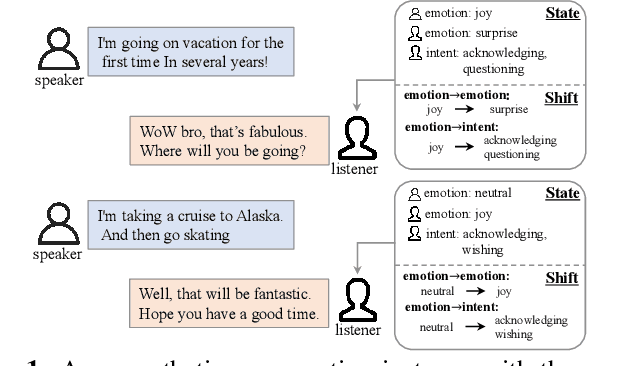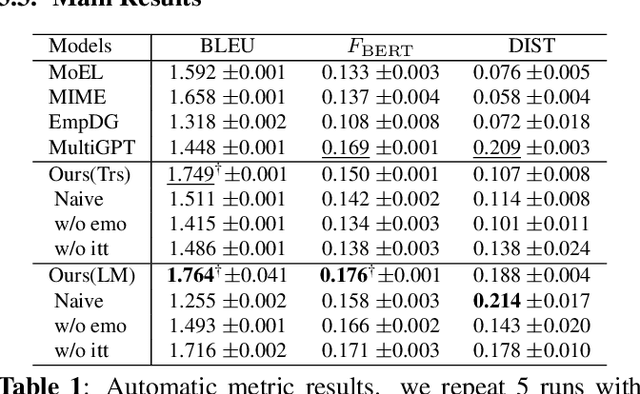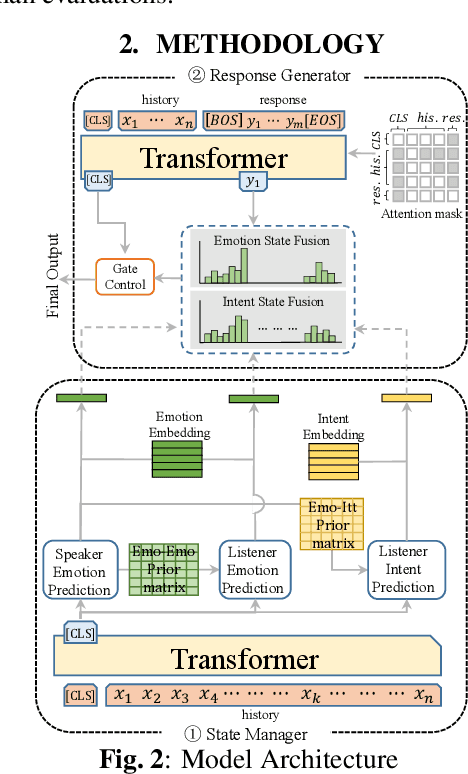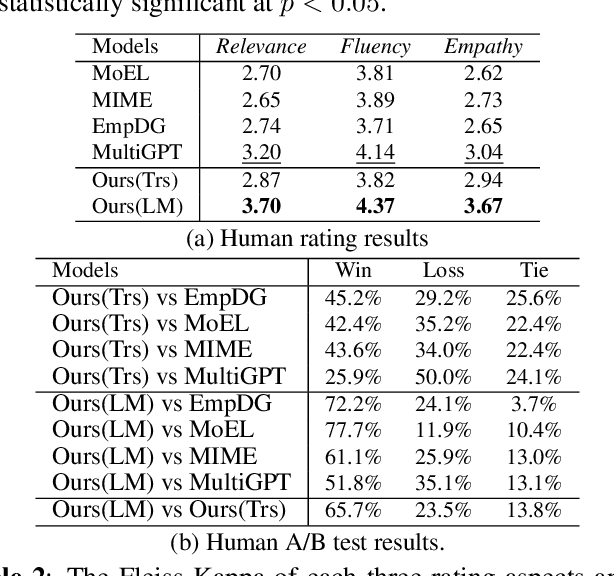Empathetic Response Generation with State Management
Paper and Code
May 07, 2022



The goal of empathetic response generation is to enhance the ability of dialogue systems to perceive and express emotions in conversations. Current approaches to this task mainly focus on improving the response generation model by recognizing the emotion of the user or predicting a target emotion to guide the generation of responses. Such models only exploit partial information (the user's emotion or the target emotion used as a guiding signal) and do not consider multiple information together. In addition to the emotional style of the response, the intent of the response is also very important for empathetic responding. Thus, we propose a novel empathetic response generation model that can consider multiple state information including emotions and intents simultaneously. Specifically, we introduce a state management method to dynamically update the dialogue states, in which the user's emotion is first recognized, then the target emotion and intent are obtained via predefined shift patterns with the user's emotion as input. The obtained information is used to control the response generation. Experimental results show that dynamically managing different information can help the model generate more empathetic responses compared with several baselines under both automatic and human evaluations.
 Add to Chrome
Add to Chrome Add to Firefox
Add to Firefox Add to Edge
Add to Edge